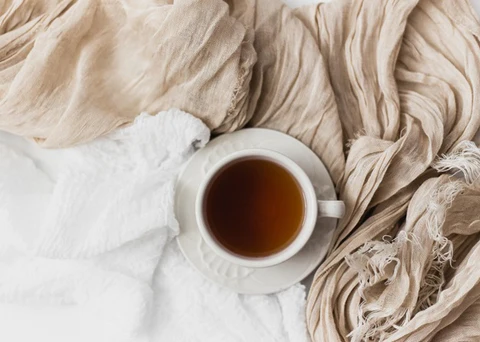Getting a deep sound sleep after a busy day schedule is what individuals yearn for to end each hectic day. However, this doesn’t normally come by chance, it has to be intentional, and weighted blankets are one bedding accessory you should invest in because it does the magic.
Weighted blankets are commonly made with a special lining of materials like poly plastic pellets or glass micro beads, sometimes a combination of both.
Compared to other regular blankets, weighted blankets are practically heavier than the down quilt or average comforters kind of blankets you get to see everywhere. Typically, a blanket would be considered weighty if it weighs from 4 to 30 pounds. Suitable weighted blankets for small children are the ones with a few extra pounds but 20 or more extra pounds suits adults perfectly.
Its uniqueness springs from the “pressure therapy” that it adopts to bring one’s body to overall feelings of relaxation and calmness, that kind of warm feeling that you get when swaddled, held or hugged.
To unravel the mystery behind a sound and cozy sleep, weighted blankets have in recent times become a bedding accessory that one cannot do without. Apart from the fact that an individual gets a good sleep under it, it has also become a gift to give to beloved ones in cold weather.
For sleepers (adults and children inclusive) research has it that this bedding accessory reveals that a lot of people depend on it to manage various medical conditions that could result in sleeping difficulty or disorder. Not only does the accessory provides safe alternatives to medication or other types of treatment but they are also considered useable to complement existing therapies to manage and reduce symptoms of conditions such as anxiety, autism, insomnia or attention difficulties. Weighted blankets have proven to also help to encourage restful sleep, reduce stress and enhance mood.
The possibility that your blankets would look dull and unattractive after sleeping under them every night is not something that you should be caught up with unaware. Like every clothing, laundry is required every time they are used, there is no exemption to bed cover. Your blanket won’t remain clean forever, that’s what it means!
Nevertheless, blankets cannot be washed the same way you do your regular laundry, far from it. A couple of factors should be considered, which ranges from the nature of materials that they are made with to their bulkiness. If owning a blanket is important as it looks then learning how best to keep it clean is as important as owning one.
There are different opinions on how to wash a weighted blanket but the best way to get it done is what you will get to learn here.
Typically, you can start the washing procedure by paying attention to the following salient details;
Although purchasing weighted blankets is considered an investment in quality rest and comfort but washing them is a different kettle of fish entirely. An intentional effort is needed periodically to keep them fresh and so clean for years of blissful night rest.
Fillings, cover material and the weight of a blanket have a great influence on how best the blanket is to be washed.
As described earlier, a filling is what makes blankets bulky. The filling is evenly distributed in tiny pockets across the blanket which as a result distribute weight across sleeper’s body when they lay under them, giving that sensation of a huge hug or cuddle. Different filling materials require a specific method of washing.
Blankets having micro glass beads filler are safe to wash in the machine, but ensure you check the care label properly before any attempt.
It would be unnecessary to iron blanket with glass beads, you should save yourself of such trouble.
Do you care to know the most comfortable filling option? Your guess is as good as mine, smooth small pebbles! Practically, it’s the perfect DIY choice for heavy blankets.
It’s hilarious to hear that food substances can also be used as filler in our beddings, right?
Organic substances like beans, rice, corn, among others are affordable options for a bulk blanket but, it’s disappointing to know that they are not washable. You know how food gets soaked and decomposes when in contact with water, you sure don’t want to see your blanket gets unnecessarily irritating.
It’s not commonly recommended as blanket fillers.
Do you desire to have a heavier blanket? If yes then, blanket with steel short beads filling is what you should go for but, you’ve got to prepare because washing it is not a joke at all.
For a durable weighted blanket, this is the best option you got. Its durability is rooted in the fact that their smooth surface gives no room for dirt to accumulate, leaving the inner part of your blanket as clean as new.
Plastic poly pellets are said to be a common filler.
Ensure you check to turn over frequently so as to achieve the best result after sunset.
Below is a compilation of the most common blanket cover materials used for weighted blankets, alongside are specific instructions that would help you in no small way to care for them. Nevertheless, specific fabric requires a different approach to cleaning.
For the records, cotton is one of the most popular fabrics everywhere, you can use them in any kind of weather plus, they are easy to maintain.
The fabric originated from wood, it is considered a semisynthetic fabric after being pulp-treated with chemicals. The fabrics are majorly selected for their durability. Its medium weight attribute makes it desirable in making a weighted blanket.
Before washing a fleece blanket, ensure you inspect for stain and soak in the washing machine for about 45 minutes before washing.
Flannel
Flannel fabrics wear out quickly when hot water is used on them.
Don’t allow it to stay for too long in the dryer, remove immediately after the cycle to prevent over-drying.
Minky
Minky weighted blanket is one of the best selling blankets. This is because of its soft and lush texture, durable, and very easy to wash and maintain.
Keep fabric away from hot water and high heat because it’s a polyester blend and cannot tolerate high temperature.
The Bulkiness of Your Blanket
The weight of your blanket also spells out how best to handle it while cleaning or washing. Where and how you will wash a 15 pounds blanket would be different from how you’ll handle that of a 30 pounds, moreover, all washing machine has specific capacity they can take at a goal. It’s wise to carefully check the care label to see if your blanket would be safe in a washing machine or not.
For Blankets under 15 pounds
You can wash blanket of this weight in your home machine on a gentle cycle following the guidelines below
For blanket Over 15 pounds
Blanket over 15 pounds is advised not to be washed in home washing machines to prevent the machine from wear and tear. Hefty blankets of this weight are better washed in a commercial-size machine. Blanket above 15 pounds have three alternative way of washing;
Ask for help when hand-washing because blankets are heavier when wet. And read care label instruction thoroughly.
How To Get Rid of Stain on Blanket

Breakfast in bed is one amazing moment you wouldn’t want to miss every morning. Your cup of coffee might accidentally spill on your blanket in the heat of the moment. How would you tackle the stain will likely be the first question that pops into your head. You don’t have to get worked up, just follow this procedure;
To remove coffee stain
To remove a greasy stain
To remove urine stain

To remove red wine stain
It is necessary to inspect blankets for stain before washing and give specific stain the required special treatment.
How Often Should Weighted blankets Be Washed?
You wouldn’t envisage washing your weighted blanket every single time you get your laundry done, would you? Remember they are heavy!
You use it almost every time you get on the bed, if not every night, then there has to be a time when it should be cleaned up.
Since washing it frequently is not an option, you just have to get it washed periodically. Two or three times annually would do, even if it still looks clean. You should as well air frequently in between washings to prevent bacteria.
Conclusion
Remember, the weight, filling and cover material of a blanket has a way of influencing its washing procedure.
No matter how rumpled your blanket looks, do not iron, just save yourself that headache already.
Always remember to refer back to the manufacturer’s instructions whenever you decide on washing your blanket.
Recent Articles
Subscribe To Our Weekly Newsletter